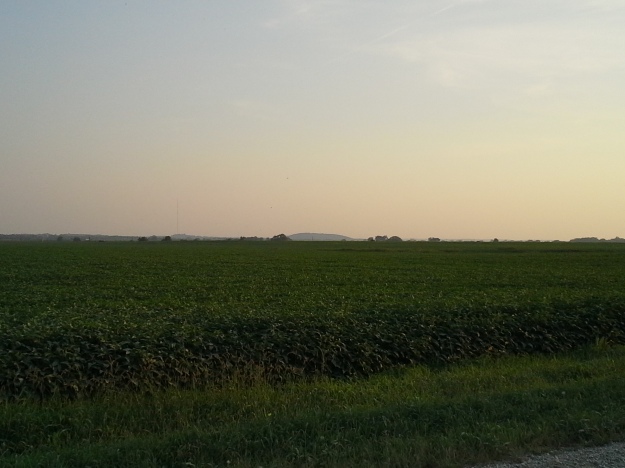A year ago, we picked up a copy of Ronda Hassig’s The Abduction of Jacob Rote: A Civil War Tragedy, a smart and accessible historical novel written from the perspective of Jacob Rote, a young boy who was kidnapped by Quantrill’s men and forced to lead them into Lawrence (it’s based on a true story). Written for middle schoolers, it’s a quick and easy introduction to the tragic events that would later be known as Quantrill’s Raid and the Lawrence Massacre.
With Quantrill’s Raid on Lawrence on our minds, we grabbed a free copy of Historic Cemeteries Tour of Lawrence at the Lawrence Visitor’s Center and started exploring how this tragic event shaped the way Lawrence buried its dead. The guide covers five cemeteries: Davis Cemetery, Pioneer Cemetery, Haskell Children’s Cemetery, Memorial Park Cemetery, and Oak Hill Cemetery. We explored two with strong connections to the Lawrence Massacre: Pioneer Cemetery and Oak Hill Cemetery.
Pioneer Cemetery

Established in 1854, Pioneer Cemetery is a typical early town settlement cemetery. Originally known as Oread Cemetery, it is the final resting place for some of Lawrence’s earliest settlers and several deaths connected to the battles over slavery.
 Thomas W. Barber, an abolitionist from Ohio who was murdered by pro-slavery supporters, is buried there, and the chilling poem that commemorates his death is engraved in two large stone tablets.
Thomas W. Barber, an abolitionist from Ohio who was murdered by pro-slavery supporters, is buried there, and the chilling poem that commemorates his death is engraved in two large stone tablets.

Thomas W. Barber Memorial.
Several Civil War Soldiers form the 13th Wisconsin Cavalry who died of typhoid fever are buried there, as well.

Civil War Soldiers.
Originally, most of the 180 men and boys killed during Quantrill’s Raid were buried here (including 70 in a mass grave), but most of the remains were reburied at Oak Hill Cemetery. Four markers of Lawrence Massacre victims are still visible.

Louis Swan, killed in the Lawrence Massacre.

Samuel Jones, killed in the Lawrence Massacre.

Chester Hay, killed in the Lawrence Massacre.

George Coat, killed in the Lawrence Massacre.
Today, the land is reserved for University of Kansas faculty and staff members, whose cremains are marked by highly personalized ground markers. It is a simple yet moving cemetery, and it’s hard not to imagine the trauma the community must have endured burying so many of their men and boys here, only to move them to Oak Hill Cemetery later on.

John Morley and Marie Thompson Morley.

Benjamin Hyman Zimmerman was involved with organizations that promoted equality among people of different backgrounds.

Frank Warren Wilson’s marker reads, “was an autochthonous (look it up) geologist.”
Oak Hill Cemetery

Part of Section 2 at Oak Hill Cemetery.
Established in 1865, Oak Hill Cemetery was created in response to the mayor’s plea for a cemetery that was closer to town (Pioneer Cemetery was out in the country back then and difficult to maintain).
Professionally landscaped as a garden cemetery, Oak Hill also served to memorialize the victims of Quantrill’s Raid. Although some Raid victims are buried individually, most were reinterred in a mass grave behind a large monument commemorating them.

The ground behind this memorial monument undulates with the rows of Quantrill’s Raid victims moved from Pioneer Cemetery and reburied in Section 3 at Oak Hill.

Quantrill’s Raid memorial (detail).
Obelisk monuments are common for cemeteries of this era, and Oak Hill has one of the largest collections of intact obelisks I’ve seen in Kansas.

One of the largest collections of intact obelisks in Kansas.
The cemetery is also home to some famous Kansans. U.S. Senator James H. Lane (1814-1866), architect John H. Haskell (1832-1907), President Abraham’s Secretary of the Interior John P. Usher (1816-1889), and basketball coach Dr. F. C. “Phog” Allen (1885-1974) are all buried here. Emporia Gazette editor William Allen White called Oak Hill Cemetery “the Kansas Arlington.”

Usher mausoleum.
This large cemetery is home to numerous artistic monuments, including a receiving vault. The cemetery includes statues, tree stump monuments, family mausoleums, and other personal and amazing expressions of grief and remembrance. A vast cemetery with thousands of burials, you could easily walk through this cemetery every day for a year and not see every single grave.

Receiving Vault.

Spanish-American War memorial, front.

Spanish-American War monument, detail.

Spanish-American War monument, rear.

Sinclair monument.

Stained glass in a family mausoleum.

Hanna monument, detail.
More about Quantrill’s Raid and the Lawrence Massacre
The city of Lawrence and the Freedom’s Frontier National Heritage Area have numerous events planned during the next several weeks to commemorate this important moment in Kansas/Missouri history. Visity 1863 Lawrence and the Freedom’s Frontier websites for more information.


























